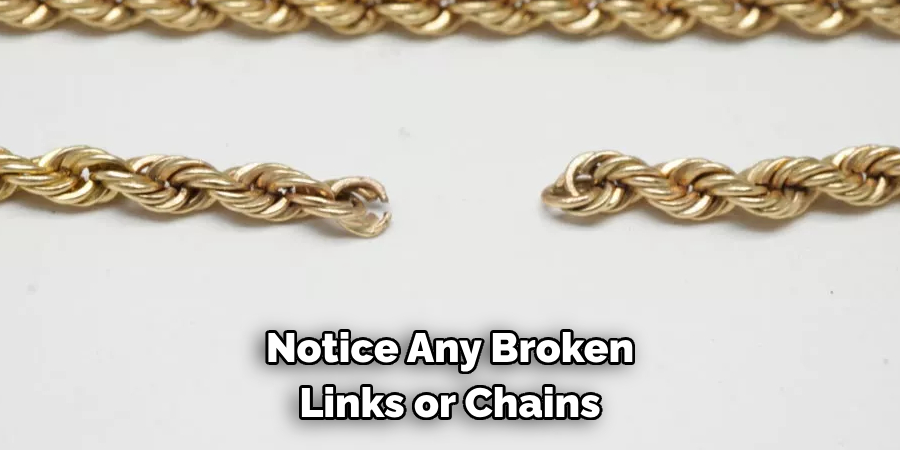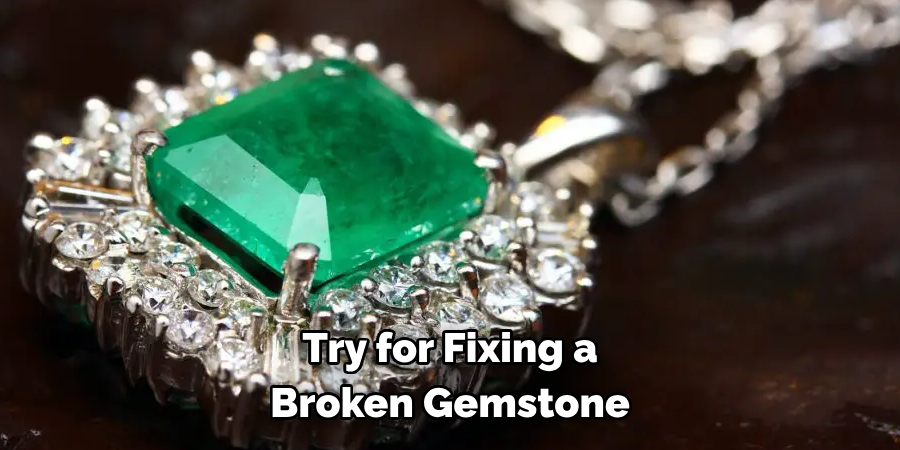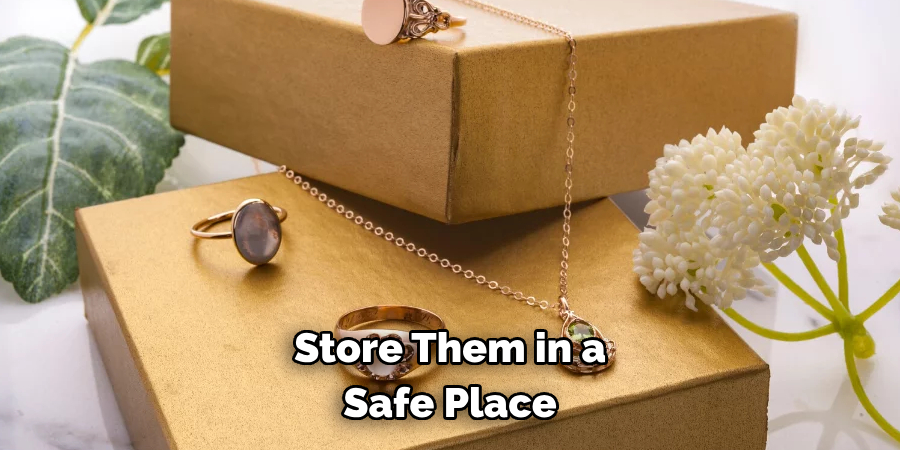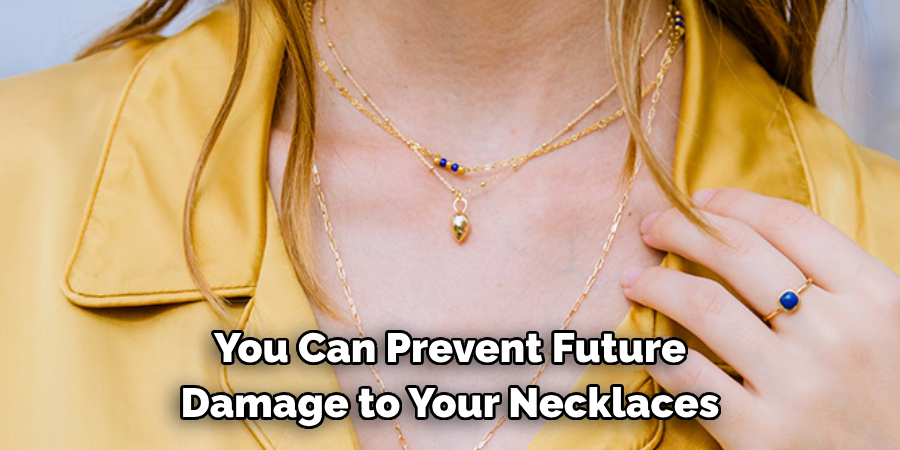Necklaces are one of the most popular and stylish accessories that people love to wear. They come in various designs, materials, and lengths, making them a versatile and must-have accessory for every wardrobe. However, as with any piece of jewelry, necklaces can break or get damaged over time due to regular wear and tear.

The main advantage of knowing to fix a necklace is that you can save money by repairing your own jewelry instead of purchasing new ones. Besides, fixing a broken necklace by yourself can be rewarding and satisfying. It also increases the longevity of your jewelry collection as you wouldn’t dispose of them easily just because they are broken. Read this blog post to learn how to fix a necklace.
Step by Step Processes for How to Fix a Necklace
Step 1: Inspect the Necklace
The first step to fixing a necklace is to inspect it thoroughly. Look for any loose or broken links, clasps or chains. This will give you an idea of what needs to be fixed and how.
Step 2: Gather Necessary Tools
Before starting the repair process, make sure you have all the necessary tools at hand. These may include pliers, wire cutters, jump rings, and clasps. Creating a suitable workspace will make the process easier. Choose a well-lit area with enough room to work and lay out your tools and materials.
Step 3: Fix Broken Links or Chains
If you notice any broken links or chains, use pliers to gently bend them back into shape or reattach them with jump rings. Loose or broken clasps can be easily fixed by replacing them with new ones. Use pliers to open the jump ring that holds the clasp in place, replace the clasp and close the jump ring.

Step 4: Re-string Beads
If your necklace is made of beads, one or more may have fallen off. Re-stringing them can be done by using a needle and thread or a thin wire. If your necklace has tangled chains, apply some baby oil or lubricant to the knots and gently use a pin to separate them.
Step 5: Adjust Length
If you want to change the length of your necklace, you can simply add or remove links using pliers and jump rings. If any stones are loose, use jewelry glue to secure them back in place. Be careful not to use too much glue as it may damage the stone or metal.
Finally, clean your fixed necklace with a jewelry cleaner or warm soapy water. You can also polish it with a soft cloth to restore its shine.
Safety Tips for How to Fix a Necklace
- Always handle your necklace with clean and dry hands. Any oil or dirt on your hands can transfer to the necklace, making it difficult to repair.
- Use proper tools like tweezers, pliers, or needle-nose pliers to fix a small link of chain.
- Avoid using sharp and pointy objects like scissors or knives as they can cause more damage than fixing it.
- Work on a flat and clean surface to avoid losing any small pieces.
- If your necklace is made of delicate materials like pearls or gemstones, seek professional help instead of attempting to fix it yourself.
- Be careful while handling necklaces with intricate designs as they may have hidden clasps or links that can easily break or get tangled.
- Don’t force anything. If you feel that the repair process is causing more damage, stop and seek assistance from a professional jeweler.
By following these safety tips, you can ensure that your necklace is fixed without causing further damage or harm. Now let’s move on to the steps for fixing a necklace.
Are There Any DIY Methods for Fixing a Broken Gemstone on Your Necklace?
Yes, there are some DIY methods that you can try for fixing a broken gemstone on your necklace. However, keep in mind that these methods may not work for all types of gemstones and it’s always recommended to seek professional help for valuable or delicate pieces.

1. Epoxy Glue
This is a strong adhesive that can be used to fix small cracks or chips in gemstones. Apply a small amount of epoxy glue on the broken area and press the pieces together gently. Leave it to dry completely before wearing.
2. Clear Nail Polish
This method works best for cracked gemstones. Simply apply a layer of clear nail polish over the cracks and let it dry. It will help hold the pieces together temporarily until you can get professional assistance.
3. Wire Wrapping
If you have a broken gemstone that is still in one piece, you can try wire wrapping the stone onto the necklace. Use a thin and flexible wire to wrap around the stone and secure it onto the necklace.
Remember to be gentle while using these DIY methods and always seek professional help if you are unsure or hesitant about fixing your necklace yourself. It’s always better to take precautionary measures to avoid causing more damage to your jewelry.
How Can You Prevent Future Damage to Your Necklace?
After learning to fix a necklace, it’s important to also know how to prevent future damage. Here are some tips on how to take care of your necklaces and avoid any potential issues:
1. Store Them Properly
When not wearing your necklaces, make sure to store them in a safe place where they won’t get tangled or damaged. This could be in a jewelry box or hanging on a necklace tree. Avoid storing them in a crowded drawer where they can easily get tangled with other items.

2. Avoid Contact with Chemicals
Chemicals such as perfume, lotions, and cleaning products can damage the metal and stones in your necklaces. Make sure to put on your necklaces after applying these products and also avoid wearing them while doing household chores.
3. Remove Before Physical Activities
It’s best to remove your necklaces before engaging in physical activities such as exercising, playing sports, or swimming. These activities can cause the necklace chain to break or the pendant to get damaged.
4. Clean Them Regularly
Just like any other piece of jewelry, necklaces need regular cleaning to maintain their shine and prevent any build-up of dirt or oils. You can use a soft cloth to gently wipe the necklace or soak it in warm water with mild soap for a few minutes before rinsing and drying.
5. Check for Loose Parts
Every once in a while, check your necklaces for any loose stones or clasps that may need fixing. This will prevent further damage and ensure that your necklace stays in good condition.
By following these simple tips, you can prevent future damage to your necklaces and keep them looking beautiful for a long time. Remember, taking care of your jewelry is essential to make them last.
What Are Some Common Mistakes to Avoid When Attempting to Fix a Necklace?
When it comes to fixing a necklace, there are some common mistakes that people make which can end up causing more harm than good. If you’re attempting to fix a necklace on your own, here are some things to keep in mind:
1. Pulling too Hard
One of the most common mistakes when trying to fix a necklace is pulling too hard on the chain or the clasp. This can cause the necklace to break or even make it more tangled.
2. Using Inappropriate Tools
Another mistake people make is using inappropriate tools such as scissors or pliers to try and fix their necklaces. These tools can end up damaging the delicate chains, rendering them unusable.

3. Not Having Enough Patience
Fixing a necklace requires a lot of patience and precision. If you rush through the process, you may end up causing more damage or making the necklace even more tangled.
4. Not Identifying the Root of the Problem
It’s important to identify what caused the necklace to break in the first place so that you can fix it correctly. For example, if a chain link broke, simply reattaching it won’t solve the problem and it may break again.
Not seeking professional help: If you’re unsure about fixing a necklace, it’s best to seek professional help. A jeweler or jewelry repair shop will have the necessary tools and expertise to fix your necklace without causing further damage.
Conclusion
In conclusion, learning to fix a necklace is an essential skill for anyone who loves wearing jewelry. Not only does it save you the time and money of having a professional repair it, but it also allows you to customize and personalize your necklaces in unique ways. However, there are some disadvantages to keep in mind when attempting to fix a necklace on your own.
One of the main drawbacks of fixing a necklace yourself is the potential for causing further damage. If you are not careful or do not have the proper tools, you could accidentally break or scratch your necklace, making it even more difficult to repair. Additionally, attempting to fix a delicate or complex necklace without proper knowledge and expertise can result in permanent damage that cannot be undone. I hope this article has been beneficial for learning how to fix a necklace. Make Sure the precautionary measures are followed chronologically.
You Can Check it Out to Fix Bent Gold Grillz
